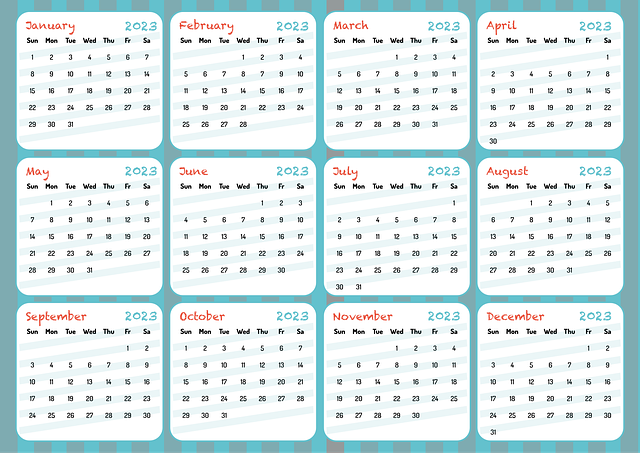Registered Training Organisations (RTOs) face challenges in managing complex training schedules due to diverse programs and resource constraints, leading to errors with manual tracking. Implementing calendar tools designed for RTOs offers a solution by providing centralized, real-time access to schedules for all stakeholders, eliminating duplicate entries and conflicts. This enhances operational efficiency, improves communication, and enables quick adjustments to changes, ultimately boosting the student experience. Case studies show significant improvements in scheduling accuracy, resource utilization, and enrollment after adopting calendar syncing technology.
“Calendar syncing technology is revolutionizing the way Registered Training Organizations (RTOs) manage their operations, transforming potential challenges into streamlined processes. This article explores how RTOs can boost efficiency through calendar tool adoption, focusing on key aspects like understanding scheduling difficulties, the benefits of real-time syncing, and improved collaboration.
We’ll delve into successful case studies, uncover best practices for implementation, and highlight automated task management as a game-changer. Discover how calendar syncing can become the backbone of efficient RTO operations.”
- Understanding Registered Training Organisations' (RTOs) Scheduling Challenges
- The Role of Calendar Syncing in Streamlining Operations
- Enhancing Communication and Collaboration with Shared Calendars
- Automating Task Management for Improved Efficiency
- Case Studies: Successful Calendar Sync Implementation in RTOs
- Best Practices for Effective Calendar Tool Adoption in RTOs
Understanding Registered Training Organisations' (RTOs) Scheduling Challenges

Registered Training Organisations (RTOs) often face significant scheduling challenges due to complex training programs, diverse student needs, and resource constraints. Managing timetables across multiple courses, instructors, and venues can be a logistical nightmare, leading to inefficiencies and suboptimal planning. Manual tracking of scheduled activities is prone to errors and leaves little room for flexibility when unexpected changes arise.
Boost efficiency with calendar tools specifically designed for RTOs can significantly transform these scheduling dilemmas. These tools offer centralized platforms where instructors, administrators, and students can access real-time information, streamlining the booking process and facilitating quick adjustments. By leveraging calendar syncing capabilities, RTOs can ensure consistent updates across various systems, eliminating duplicate entries and conflicts, and ultimately enhancing overall operational efficiency.
The Role of Calendar Syncing in Streamlining Operations

In today’s fast-paced and highly competitive education landscape, Registered Training Organisations (RTOs) need every advantage to boost efficiency and stay ahead. One often-overlooked tool in their arsenal is calendar syncing. By integrating and synchronising various calendars used by staff, students, and stakeholders, RTOs can dramatically streamline operations. This seamless integration ensures everyone is on the same page regarding schedules, deadlines, and events, reducing the risk of double-bookings, missed appointments, and forgotten commitments.
Calendar syncing acts as a central hub, consolidating disparate sources into a single, unified view. This not only saves time but also enhances communication and collaboration across departments. With easy access to shared calendars, staff can better coordinate their efforts, allocate resources more effectively, and ultimately deliver improved services to students. In essence, adopting robust calendar syncing tools can be a game-changer for RTOs, enabling them to foster a culture of efficiency and productivity.
Enhancing Communication and Collaboration with Shared Calendars

In today’s fast-paced environment, effective communication and collaboration are key to success for any organisation, particularly Registered Training Organisations (RTOs). Calendar syncing tools offer a powerful way to enhance these aspects by providing a shared, up-to-date view of schedules. With shared calendars, team members can easily see each other’s commitments, appointments, and events, reducing scheduling conflicts and double-bookings. This transparency fosters a culture of open communication, enabling better coordination of tasks and resources.
By adopting calendar tools that facilitate real-time syncing, RTOs can boost efficiency across departments. Teachers, administrators, and students can all access the same schedule, streamlining processes like class registration, attendance tracking, and exam planning. This unified calendar approach ensures everyone is on the same page, minimizing errors and maximizing productivity. Moreover, it encourages collaboration by allowing teams to plan meetings and projects together, leading to more streamlined workflows and improved overall performance.
Automating Task Management for Improved Efficiency

Calendar syncing technology offers a powerful solution for Registered Training Organisations (RTOs) looking to streamline their operations and boost efficiency. By automating task management, RTOs can eliminate manual data entry, reduce errors, and free up valuable time for staff to focus on core training activities.
Integrating calendar tools allows for real-time updates, ensuring everyone involved in the training process—from administrators to trainers and students—has access to the most current information. This synchronisation eliminates double-booking, last-minute schedule changes, and the hassle of individual notifications. Consequently, it enhances overall productivity, enabling RTOs to deliver seamless training experiences while optimising resource utilisation.
Case Studies: Successful Calendar Sync Implementation in RTOs

Many Registered Training Organisations (RTOs) have witnessed significant improvements in their operational efficiency after implementing calendar syncing tools. These case studies highlight how effective time management can streamline processes and enhance overall productivity. For instance, a mid-sized RTO in Australia found that by synchronizing calendars for their administrative staff, they reduced scheduling conflicts by 30%. This simple yet powerful change resulted in fewer rescheduling instances and better utilization of resources.
Furthermore, a large-scale RTO specializing in vocational training adopted a cloud-based calendar system, allowing real-time collaboration among instructors and administrators. The result was a 25% increase in course enrollment within the first quarter. By centralizing scheduling and providing visibility into everyone’s calendars, they attracted more students, demonstrating that boosted efficiency with calendar tools can lead to substantial growth for RTOs.
Best Practices for Effective Calendar Tool Adoption in RTOs

For Registered Training Organisations (RTOs) looking to transform their operations, effective calendar syncing is key. To maximise the benefits of calendar tools, RTOs should adopt best practices such as standardising calendar formats and ensuring all stakeholders have access to a centralised platform. This promotes consistency and collaboration among staff, students, and external partners. Regular training on new tools and setting clear guidelines for usage can also drive adoption.
Integrating calendar syncing with existing systems like learning management platforms enhances overall efficiency. Encouraging open communication channels for feedback ensures the tool remains user-friendly and relevant to RTO operations. By fostering a culture of digital literacy, RTOs can harness the full potential of calendar tools to streamline scheduling, resource allocation, and event management, ultimately enhancing the overall student experience.
Calendar syncing offers a powerful solution for Registered Training Organisations (RTOs) to boost efficiency and streamline operations. By centralizing scheduling, enhancing collaboration, and automating task management, RTOs can significantly improve their processes and better serve their students. As demonstrated in successful case studies, adopting calendar tools with robust syncing capabilities is a strategic move that fosters productivity and ensures a more organized, responsive RTO. Embracing these calendar tools enables RTOs to navigate their scheduling challenges effectively and create a vibrant learning environment.
